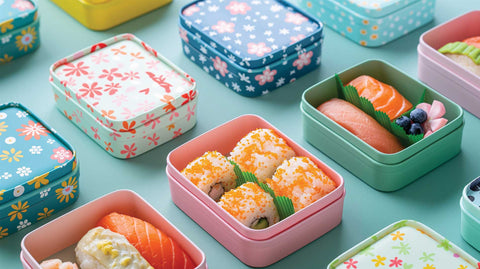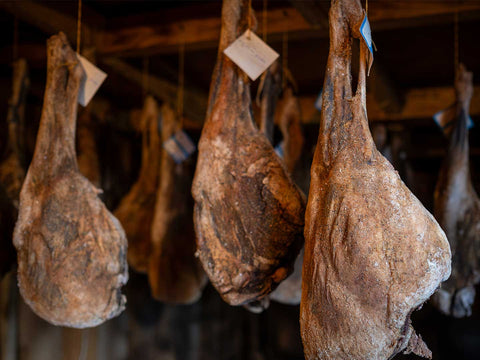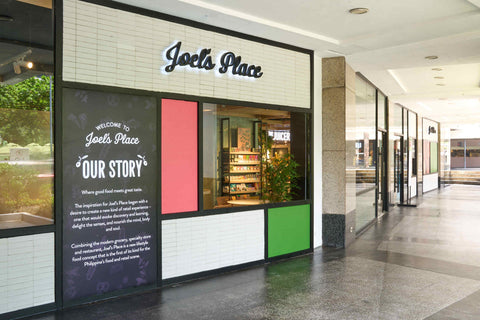“What are we having for lunch?” is a question everyone is used to asking or hearing once the clock strikes a certain time—mostly from 11 a.m. to 3 p.m. daily. “I don’t know, what do you want?” can often be heard as a reply to the seemingly hard question asked. It’s true, the options for lunch are endless.
For office workers like us, it’s a constant debate whether to get fast food or to opt for a quick and light meal in between meetings. For businesspeople in the cities, lunches are a way to network with others, while for others, it’s a slow, steady, and important ritual embedded in culture. As we explore how lunches around the world differ in some countries, we are also offered a peek into their cultures and the significance of lunch in their lifestyle and traditions.
Oceania
When the clock strikes 11 o’clock, it’s lunchtime for some countries. For Australia, it’s brunch—short for breakfast and lunch—a mid-morning to early lunchtime meal popular due to their café culture that has emerged even in various parts of the world. Popularized by Australian chef Bill Granger, brunches in Australia consist of all-day breakfast menus that are filling, wholesome, and healthy, echoing their health-conscious lifestyle and valuing fresh and high-quality produce.
A typical Australian brunch includes wholesome and filling meals like eggs, ricotta pancakes with honey, smashed avocado on toast, and hearty porridges. The idea of combining lunch and breakfast into one meal allows people to enjoy two elements of food—a hearty serving of breakfast and a healthier serving of lunch. With this generation popularizing cafés around the world, several countries have picked up on this brunch culture and Australian-style meals to provide the best of both worlds.
Europe
In France, you may have encountered friends or strangers-turned-friends who would ask “Apéro?” during one of your visits. It means getting a drink before dinner (and sometimes before lunch)—a common European tradition called apéritif. This casual get-together involves light drinks and snacks, usually wines and small plates that can be enjoyed anywhere you are—be it in cafes, restaurants, your friend’s place, or a nearby park or beach.
By noon, lunch in France is in full swing and often lasts for two hours. A typical lunch in France includes an entrée such as salad, soup, or pâté, a main course of either meat or seafood with rice, pasta, or potatoes, and a dessert. If you’re a tourist, you’d probably be surprised by some shops closing from 12 p.m. to 2 p.m., as everyone flocks home or to restaurants to have their sacred lunch. Workers are even banned from eating at their desks or in their workplace, as stated in the French Labor Code. This law was born out of a concerning health hazard back in the 1890s, wherein workers—especially those working in factories—used to take their lunch at work. The sanitary risk of eating within these areas became a concern, and the only way to prevent it was by banning workers from eating lunch at work.

By the time lunch ends in France, Spain begins their midday lunch or la comida, which starts from 2 p.m. to 4 p.m. While lunch in Spain is considered late compared to other countries, they have quite similarities with France in terms of pre-lunch rituals like France’s apéritif. In Spain, their pre-lunch drink is Spanish vermouth, a fortified wine with aromatic herbs and spices that helps kickstart a delightful Spanish meal filled with tapas and paellas.
Lunch is considered the biggest meal for Spanish people. While people in different parts of the world rush to get their lunch and carry on with their days, Spain takes their lunch seriously. Streets are often quiet during lunchtime as people take time to eat and get their much-needed siesta, a nap, or just some downtime after a full lunch meal. Once the clock strikes 4 p.m., lunch in Spain finally concludes, and restaurants close to prepare for dinner.
Asia
Sometime in between and somewhere across the globe, Japan and India take their lunches at similar times to the Philippines—anywhere between 12 p.m. to 2 p.m. In Japan, lunchtime is as crucial as in most parts of the world. Workers committed to long hours of work value lunch as an important meal to help them get through the day, at least until they finally finish work and have time to eat their late dinner. Japanese workers also consider leaving their desks and going for lunch together as a sign of camaraderie; thus, everyone goes to lunch at the same time. There’s a saying in Japanese, “onaji kamameshi wo kuu,” which translates to “all eating out of the same pot,” not literally, but a figurative way of saying they’re all together eating at the same place at the same time.
One of the common and most famous ways to eat lunch in Japan is through bento boxes, often available in restaurants, cafes, and convenience stores. They are an essential part of their culture, commonly made up of rice, two to three okazu or Japanese side dishes, a main dish that is usually meat or fish, and some sides of vegetables.
These portable meals have become part of their daily lives, may it be for workers or kids at school. These bento meals aren’t just a convenient way to carry food and provide a well-balanced diet for everyone; they are also considered a form of love, neatly and thoughtfully prepared in small containers by loved ones.
Bento boxes trace back to the Kamakura period, where they started as simple bamboo or wood boxes filled with food meant to carry the lunch of most workers. It has then evolved into an artistic expression today with intricate designs that encourage a better appetite, not just for kids but for adults as well.
In India, dabbawalas are the unsung heroes of India’s lunchtime. From the words ‘tiffin dabba’, which means the box that contains the food, and ‘walla’, which means the men delivering the food, dabbawalas rule the streets of Mumbai, delivering home-cooked meals to the working population of the city.

What’s surprisingly impressive is that dabbawalas have a delivery system that does not require any means of advanced technology. They simply rely on a system of painted colors, numbers, and letters. This precise system is used to deliver thousands of home-cooked meals to workers encased in tiffin boxes—like bento boxes—but made up of stacked aluminum cylinders. These tiffin dabbas typically contain a typical Indian lunch: rice, daal or curried vegetables, and chapati or a tortilla-style flatbread.
In India, home-cooked meals are an important tradition even up to this day, as they foster a sense of togetherness and belonging. Workers who are often off to work as early as 7 a.m. still value home-cooked meals prepared by their loved ones and rely on dabbawalas to get their meals delivered straight to work. The dabbawalas pick up these lunches and deliver them to a designated railway station. It is then sorted for delivery in different stations across the city and then re-sorted again to be delivered to their final destinations. The color-coded systems with numbers and letters indicate where the food came from and where it should be delivered.
Similarly, the Philippines also has its own lunch delivery system, but unlike India, we rely on modern applications to get food picked up or delivered to our homes. Filipinos also value home-cooked meals, and one way of getting home-cooked meals even if you’re away from home is through local eateries. In Makati, food stalls called “jollijeep” are found on most streets, especially around the central business district. It is like a mobile food truck parked on the sideways providing fresh home-cooked meals for hardworking people in the city. Meals vary from rice or noodles to soups and famous Filipino viands like adobo and tinola. These are packed in small and transparent plastic bags placed in kraft paper food packaging for easy and no-spill meals.
So, what’s for lunch, you may ask? That is still a difficult question to answer. Everyone has their preference when it comes to food. But at lunchtime, in that brief moment of the day, no matter the time or whatever you want to eat, everyone in the world pauses to take a much-needed breather—a lunch break we so deserve.





